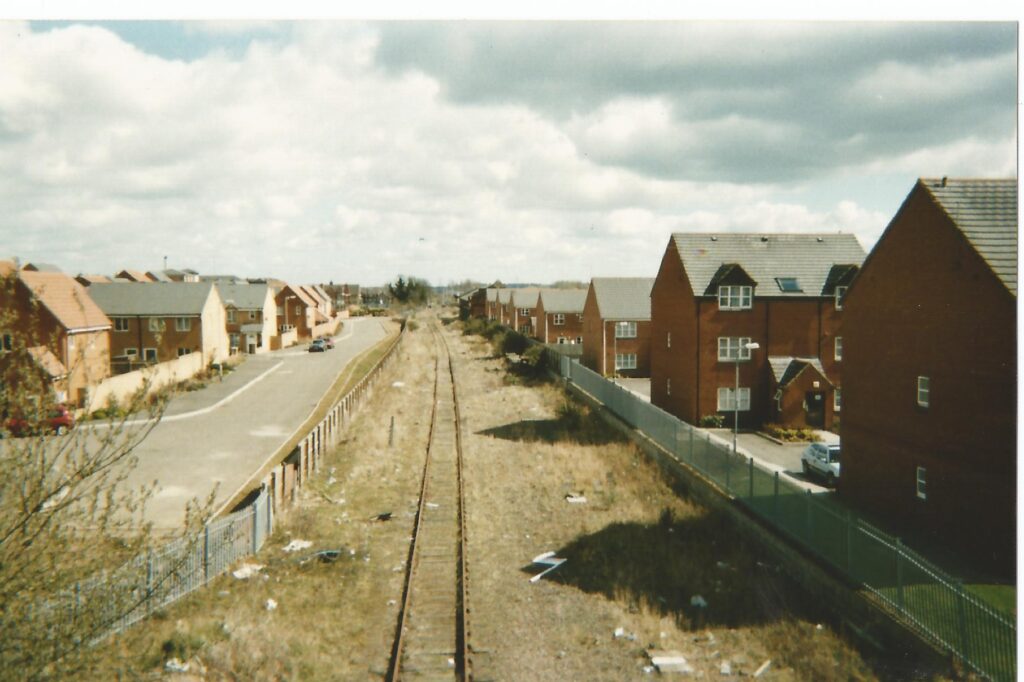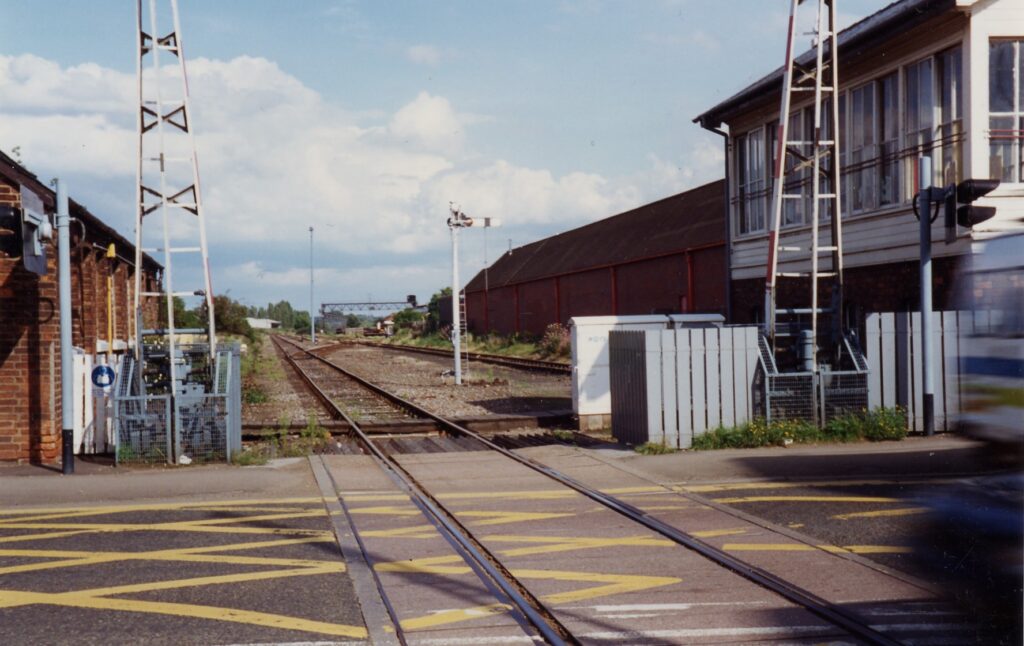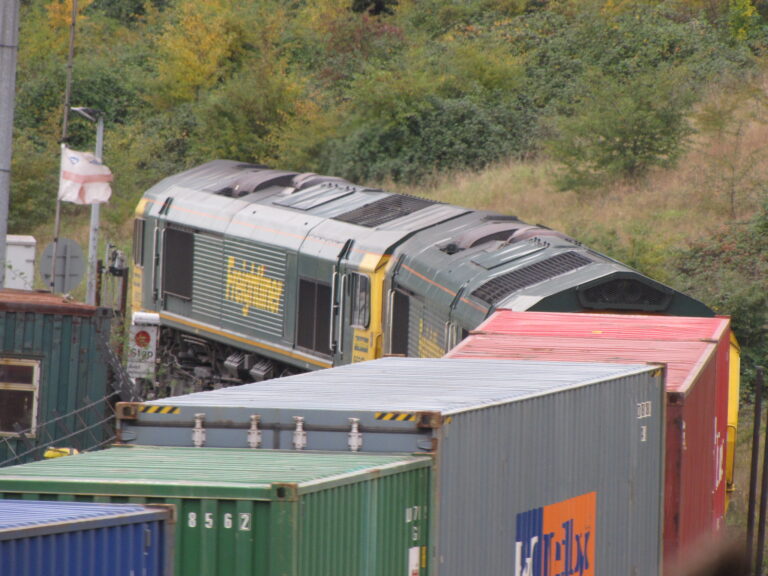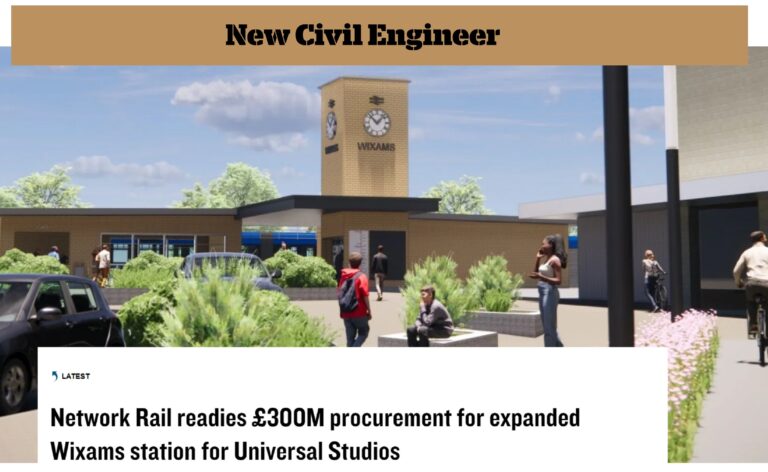Bedford – Olney Parkway – Brackmills – Northampton
B2N: Local links and regional connections…
We think it’s time to look again at restoring the rail route between the county towns.
BRTA’S VISION FOR B2N
Our vision for this missing, yet crucial, east-west link:
- Slashed journey times: Northampton to Bedford in around 27 minutes
- A parkway station for Olney at the junction of the A428 and A509
- The next Thameslink extension: Olney to London Blackfriars in under 1 hour 15 minutes
- A new station serving Great Houghton and Brackmills Industrial Area
- A new Northampton Waterside station for the University of Northampton campus
- A vital container freight link to depots in the heart of the country from east coast ports
- Regular, reliable, comfortable and accessible passenger services
- Connectivity with the upcoming East-West Rail line at Bedford
BACKGROUND
A 20 mile gap in the railway network separates Northampton and Bedford. Closure of the line in 1962 means that, today, a journey by rail takes 1 hour and 9 minutes via Bletchley. Taking a bus takes 1 hour and 30 minutes.
Go by road at peak times and expect to take over an hour to make the trip.
We’ve been campaigning for this reopening since the 90s and kept abreast of all the movements over the years.
In 2000 a reopening feasibility study was commissioned as part of a bid to operate the Thameslink franchise and an engineering study was carried out.
2003 saw the commissioning of the London to South Midlands Multi Modal Study (LSMMMS) which came to the view that Thameslink should go on to Birmingham via Northampton along a reopened B2N corridor.
In 2014, Bedford to Northampton reopening was, again, considered in detail as part of East West Rail Consortium’s connectivity study, giving projected journey times after re-railing.
Observations repeatedly found that the formation of the route is generally intact throughout, with new alignments necessary at Olney and Turvey. Consensus was that a Bedford to Northampton journey time could be as low as 27 minutes.
The evidence base for successful reopening is there. It’s time to look again at B2N.

THE POTENTIAL OF B2N
- Transformed journey times: Northampton to Bedford in 27 minutes; Olney to Bedford in 11 minutes; Olney to Northampton in 13 minutes
- Extension of Brighton to Bedford Thameslink services to Northampton with further possible extension to Rugby, Coventry and Birmingham New Street
- Sustainable community growth – car free commuting and park & ride opportunities
- Fewer HGV journeys in the region with better links to heart of England container depots
- Significantly decarbonised journeys and vast improvements in air quality
- The airport linker: 3 airports united – Gatwick, Luton and Birmingham
- A new A428/A509 Olney Parkway Railway Station
- Connections with future East West Rail (Oxford – Cambridge) services at Bedford
- Through services from West Midlands / Northampton to East Anglia
- Bedford to Birmingham New Street in 1hr 30 mins (currently 2 hr 10 mins, 2 changes)
Northampton to Luton Airport Parkway in 50 minutes (currently 1 hr 40 minutes, 2 changes) - Fast, reliable links between: Birmingham, Coventry, Rugby, Northampton, Bedford, Luton, St Albans, London Connections: International services and Underground, Croydon, Brighton Airports: Birmingham, Luton, Gatwick
THE ROUTE
After departing a remodelled Bedford station, B2N will leave the Midland Mainline on a new alignment at the former Oakley Junction, north of Bedford, before travelling along the former trackbed or adjacent land around the Stevington Country Walk.
Deviating from the old railway route east of Turvey, a newly-built railway of about 10-15 miles is required bypassing Lavendon, towards a new Olney Parkway Railway Station at the meeting of the A428 and A509. Local planning decisions have meant that Olney can no longer benefit from direct re-connection to the rail network. Rather a parkway station is now the best, balanced solution.
This new alignment would rejoin the old railway around the former Piddington Station and continue onwards to a remodelled Northampton Castle Station.
There’s huge potential for new, well used, stations for Great Houghton, Brackmills and a station serving the Waterside Campus of the University of Northampton and Delapré Abbey.

WHY IS IT NOW TIME FOR B2N?
URGENT PROTECTION NEEDED
The case for the reopening was clearly made by studies in the early 2000s. Inertia since 2003 has allowed problematic housing development to be carried out over some stretches of the railway’s original alignment which now means some sections of new build railway are necessary. A proactive stance now by local authorities would enable a more efficient and less disruptive reopening scheme for the remainder of the route – action now to avoid the risk of losing a great opportunity.
It’s also vital that new-build housing is planned in conjunction with sustainable transport development. A car-free commute must be made an attractive option.
CONNECTIVITY FOR A FAST-GROWING AND MORE PROSPEROUS REGION
Housing growth must be matched with better transport links to the key economic centres outside the area. Car use dominates as a transport mode, being used for 69% of trips to work (Census, 2011), which is heavily contributing to the congestive problems on the strategic road network in and out of Northampton and surrounding areas.
Doing nothing to support travel in the area will increase the impact of the housing and population growth that is planned and projected for the area on the current transport network. In order to boost the economy and improve the productivity of the area, sustainable transport modes must be improved now.
COMMERCE DEMANDS IT
To achieve their full potential, whilst limiting additional road movements, Daventry International Rail Freight Depot (DIRFT) sites need urgent connection to both B2N and N2MH reopened railways. These rail links, built to full freight specification (known as W10), would allow more efficient container traffic by rail, freeing up capacity on other congested rail routes. The result? Economic growth in the area and nationally whilst limiting environmental impacts.
WIXAMS FOR UNIVERSAL, BY THAMESLINK NORTH AND SOUTH
Re-railing Bedford-Northampton needs an updated feasibility study now, integrating the new Wixams main line station as a part of Thameslink.
Who pays? There’s a cost to not starting to deliver these things now: road mayhem, congestion, parking demand outstripping town supply and rising costs, waste, pollution and eyesore.
Upgraded roads produce more brownfield and unsustainable development. Without the rail alternative Brighton-Bedford-Northampton could offer, traffic will get worse than better.
SHIPPING CONTAINERS BY RAIL
Container trains from the UK’s largest intermodal port at Felixstowe to the South Midlands currently take lengthy routes via busy North London lines and the West Coast Mainline or go via the East Midlands. Over half a million containers are moved by rail from Felixstowe annually. Heavy, lengthy and slow moving, the container trains have a strong impact on passenger train paths at strategic junctions and along key routes.
A reopened Cambridge – Bedford – Northampton, a mere 50 miles, would enable direct freight routes into the West Midlands, away from main lines giving a time-speed and energy use advantages. Port operators have declared their support for enhanced east-west rail connectivity via B2N built to a specification to accommodate high cube containers on standard platform wagons.
A rapidly expanding network of rail connected warehousing units and distribution centres, the DIRFT sites demand better rail routing options, driving economic growth in the area and across the country. Moving away from heavy road dependency means that this growth can be truly sustainable.

WHAT NEEDS TO HAPPEN NEXT FOR B2N?
COUNTERING THE RISKS
Development without proper safeguarding of the proposed rail corridor means it is subject to encroachment, making reopening cost prohibitive.
Protection of the old route and land where new rail alignments are required is vital. This need not be blight – these linear routes could be used in the short-term as greenbelt corridors for walking and cycle-paths which can be incorporated into the eventual rebuilding.
Building local and national awareness of the opportunities of reopening strengthens the argument for protection and safeguarding of routes.
COMMISSIONING A NEW FEASIBILITY STUDY FOR THE 2020’s
We identify these next steps:
- Ongoing route protection by local authorities.
- Gain combined support of B2N stakeholders: Local Authorities, East West Rail; Train Operating Companies, Network Rail, Department for Transport
- B2N inclusion in Regional Transport Strategies / Local Transport Plans
- More detailed engineering study to refine capital cost estimates for B2N
- Initial environmental assessments
- Assess timetable options
- Demand forecasting and cost-benefit assessments
- Consideration of likely operating costs
- Preparation of the business case for B2N
- Consider Funding Options: Capital and Operating
B2N: HOW TO ADD YOUR VOICE
Write in support of B2N to your local councillors and MP:
members.parliament.uk/members/commons
or www.writetothem.com
It’s powerful to write to your MP or councillor in your own words, telling your representative about your own beliefs and experiences and how they relate to B2N. See below.
Join BRTA as a member to support this and other reopening campaigns
Volunteer with BRTA if you share our vision and want to help bring it about.
Could you help lead on our B2N campaign?
Donate to BRTA to help us advocate for a Bedford-Northampton rail link fit for the 21st century!
Think about the following questions when composing your letter to MPs / councillors:
- What journeys do you make? Work? Leisure? Appointments / visits?
How could B2N improve the journeys you make? - Do you actively choose road over rail or bus? Why?
- Do you consider where you live to be well served by public transport?
- Do you have experience of new areas of housing and public transport?
- What are your experiences of the road journeys you make in the region?
- Have you made employment, school or relocation decisions based on journey times or access to public transport? Or on the lack of access to public transport?
- What are your thoughts on the environmental impact of your journeys?
- Do you have accessibility needs that affect journey decisions you make?
- What do you think about air pollution in your area?
- What are the most important B2N-related issues to you? Why? Journey times? Road congestion reduction? Pollution reduction? Accessibility? Taking freight off the roads in your area? A better connected region?
- What should be done next to make B2N happen?
Our tips: - Even if your MP is not in the B2N region, your letter provides them with an opportunity to learn about the issue and take action themselves.
- Aim for your letter to be no longer than one and a half sides of A4.
- Engage. Get your representative’s attention with a dramatic fact or short statement on B2N.
- State the problem. Present the causes of the problem you just introduced. How widespread or serious is the problem?
- Inform them about the solutions that B2N would bring.
- Call to Action. Let them know what you want them to do about it.
- Ask for a response.



